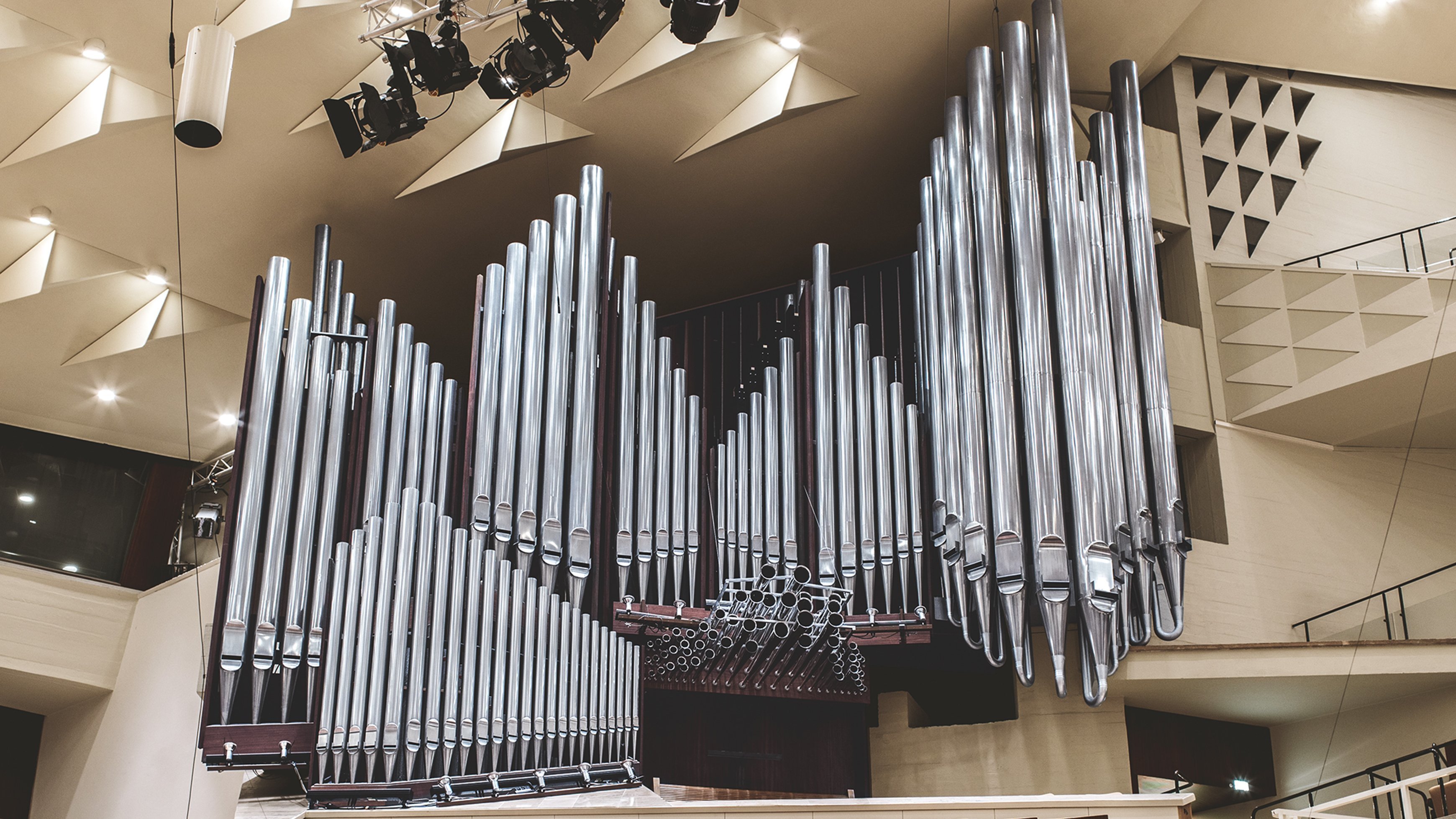
You can’t miss it: the organ of the Philharmonie Berlin cannot fail to catch the eye and is one of the finest concert hall organs in the world. A fascinating instrument that combines high-tech and craftsmanship.
For Wolfgang Amadeus Mozart, it was the queen of instruments. It can be found in almost every larger church, and also in town halls and concert halls. Composers such as Johann Sebastian Bach, Felix Mendelssohn and Max Reger wrote countless works for them, while others such as Richard Wagner did not write a single one. It is recognised as the largest of all musical instruments, producing the deepest and highest, and the loudest and softest sounds. In 2017, it was recognised by UNESCO as an intangible cultural heritage. And last but not least, in 2021, it was the first keyboard instrument to be named “Instrument of the Year”. The organ is the talk of the town.
Subject to fashion
But the organ is not like any other instrument. It is not something you can carry around like a violin or a clarinet; you have to go to it wherever it is. As a rule, organs do not belong to private individuals, but are owned by churches or towns, which usually had an influence on the design when they were built. As a result, organ building is always subject to fashions and majority decisions. An organ from 1900 sounds very different from one built after the Second World War, a French organ is very different to a German one, and the sound of a Spanish and a Dutch organ can be worlds apart.
Keyboards, pipes and lots of wind
However, the basic principle of the organ is simple and has hardly changed since its invention over 2000 years ago in ancient Alexandria: air flows through metal or wooden pipes of different sizes to produce different sounds. Over the centuries, this process has been more and more refined, new pipe shapes have been developed, experimenting with varying wind pressures and thus creating new sounds. Pipes of any one construction are called stops – they provide the timbre of an organ. Small instruments have only a handful of stops, large organs often have a hundred or more. There are about 50,000 organs in Germany, 1400 of them in Berlin alone.
An orchestra in itself
The Philharmonie’s organ, built in 1965, has 90 stops with a total of more than 6,500 pipes and is one of the finest concert hall organs in the world. It is the second largest instrument in the German capital, only the organ in Berlin Cathedral is a little larger. Many of the 90 different timbres of the Philharmonie organ are borrowed from the orchestra. There are flutes, oboes and clarinets, trumpets, trombones and tubas, strings and so-called mixed voices, which resemble the high-pitched sound of a piccolo. Other stops have such poetic names as Doppelflöte, Voix céléste and Zartbass. The longest pipe is about 10 metres long and produces a sound with 16 oscillations per second. The shortest pipe measures just under 11 millimetres and produces a sound with 15,600 oscillations per second. Most of the stops are to be found at the manuals, and the low notes are played with the feet on the pedal keyboard. Since the organist can individually set the sounds on each of the four manuals and the pedal and call them up in a matter of seconds using the latest computer technology – this process is called registration – the Philharmonie organ is able to produce a truly magical sound. One minute it sounds like chamber music from a string quartet, or ethereal like a harp, while the next minute it can conjure up the sound of a brass ensemble. If you pull out all the stops of the organ, it gets very loud and the sound roars through the auditorium.
On four Sundays per season, the world's leading organists perform organ matinees at the Philharmonie Berlin, often joined by musicians from the Berliner Philharmoniker. These matinees have become an important gathering for fans of organ music.
Tuning the organ of the Philharmonie Berlin